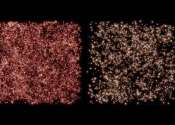New computer simulation aids in the search for the origin of cosmic rays
An international research team has developed a computer program that can simulate the transport of cosmic rays through space. The researchers hope it will help them solve the mystery of the sources of cosmic rays.









